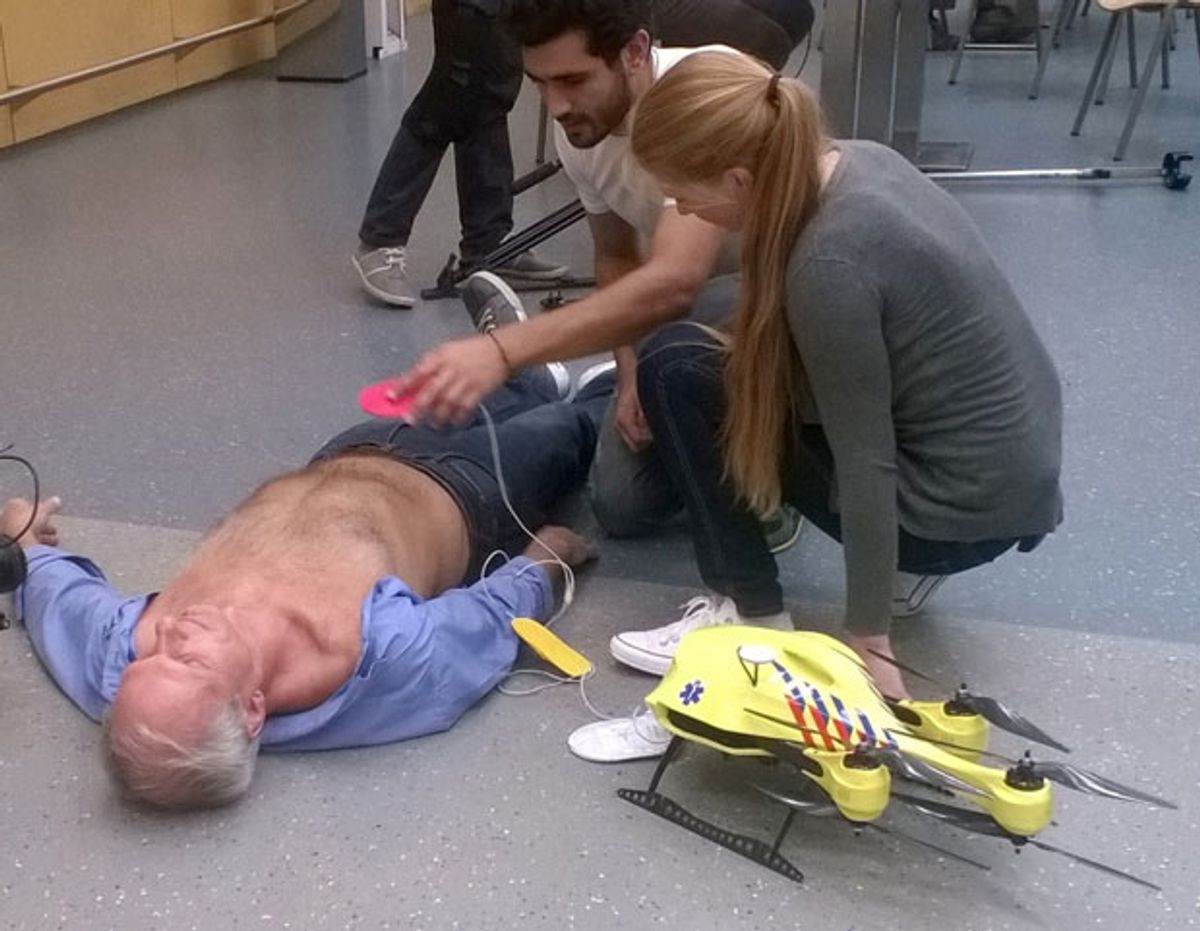Problem: Many people who go into cardiac arrest could be helped with an automated external defibrillator (AED)—as well as CPR from someone who knows what they’re doing—but most of the time, an AED isn’t handy. Solution: Turn a drone into a flying AED, and then send it to rapidly respond to emergency calls reporting a heart attack event. It’s a great idea, and its originator, TU Delft engineering graduate Alec Momont, has even built a functional flying prototype. But it is realistic?
It’s starting to feel like our job around here is to take things like drones and commercial robots and just list all the depressing reasons why they almost certainly will not work as well as we all want them to. Before you call us robo-phobes, remember: we love robots. The thing is, robots are extraordinarily compelling, but we don’t want people to get false hopes about robotics and feel misled if it doesn’t deliver on its promises.
There’s a vague belief with robots (and with startups and drones especially) that just because something is awesome, and because it’s technically possible, it’s both necessary in the short term and inevitable in the long term. For some applications, this may be true. For other applications, it’s important to say, “Okay, a robot might be technically capable of doing this, but realistically, should it?”
I think that this flying defibrillator is one case where a robot is both capable of performing the task, and it can perform the task in a way that’s significantly better than any other method, such that it’ll make a tangible, valuable difference to end users (at least until Apple announces an iPhone with an AED built in).
In practice, though, there are all kinds of problems that are as yet unsolved involving drones that want to operate in urban environments. Namely, your drone needs more than just GPS to navigate and detect obstacles, and in most places, operation out of line of sight is both illegal and usually a bad idea. Also, landing next to panicky humans with six spinning blades of death.
The defibrillator drone has not solved these problems yet. At the moment, it’s a speedy hexacopter that, according to The Daily Mail, can “get a defibrillator to a patient within a 12 square kilometer zone within a minute,” improving the chance of survival from 8 percent to 80 percent. The drones would live at central dispatching points and use GPS to navigate to the location from which an emergency cell phone call was made. The commercial version would cost about US $19,000, and could hypothetically include all kinds of other handy things, like insulin or oxygen. It also includes a camera and speakers, so that people at the scene can be instructed on how to properly use said things.
Alec Momont says that he hopes the drone will “save hundreds of lives in the next five years,” but he’s got a lot of technology and regulation to work through before he can make that happen. We hope he’s successful.
[ Alec Momont ] via [ CNET ]
Evan Ackerman is a senior editor at IEEE Spectrum. Since 2007, he has written over 6,000 articles on robotics and technology. He has a degree in Martian geology and is excellent at playing bagpipes.



